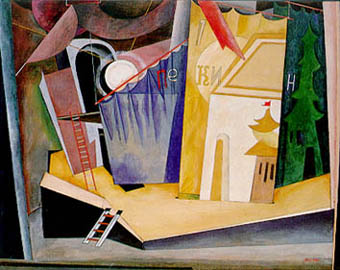

Featured Pages: Film Directing
Film Directing techniques are most usefull during this stage of training. Primary motion is first.

The modern scene designer, also known as the scenic designer or set designer, emerged in the late 19th century out of the work of the scenic artist, who painted large pieces of scenery for the theater manager. In those days scenery's main function was to provide a painted background for the actors and to indicate place and period. By the end of the 19th century, the requirements for realistic settings and furniture to make the stage look convincingly like the play’s actual setting called for a new theatrical artist—the scene designer.
Scene design can vary widely in style, ranging from the requirements of realism to theatricalism. Realism has been the dominant convention of modern theater, and it calls for the designer to create a stage environment that accurately represents real places, furniture, curtains, and so on. Stage realism pretends that the stage is not a stage but an actual living room, bar, street corner, or other environment. In contrast, scenic theatricalism expresses and symbolizes the play's atmosphere and imaginative life, rather than attempting to reproduce realistic details of place, lifestyle, and social and economic status.
In the early 20th century designers Adolphe Appia of Switzerland and Gordon Craig of Britain led a revolution against realistic stage design. They were concerned with creating mood and atmosphere, opening up the stage for large symbolic scenic pieces, and making theatrical design more expressive by using platforms, ramps, steps, panels, and drapes. The aim was to make the audience’s experience more theatrical by emphasizing language, sound, lighting, the actors’ presence, and the spectators’ imagination, instead of distracting the audience with a detailed set. This so-called new stagecraft was introduced to Broadway by Robert Edmond Jones and Lee Simonson in the 1920s. Today, such international designers as Ming Cho Lee, John Napier, and Josef Svoboda work within these design traditions in order to serve the requirements of productions ranging from Broadway musicals to single-set dramas of domestic life.
Chapter Eleven. Directing Theatre
The physical space of the performance (A Guide to Studying the Relationship Between Engineering and Theatre) ***
2007 -- textbook part 4, 5, 6 ...
Set
Costumes
Light
...
... Actors (THR221 acting2)
by Debra Bruch
danillitphil.com






